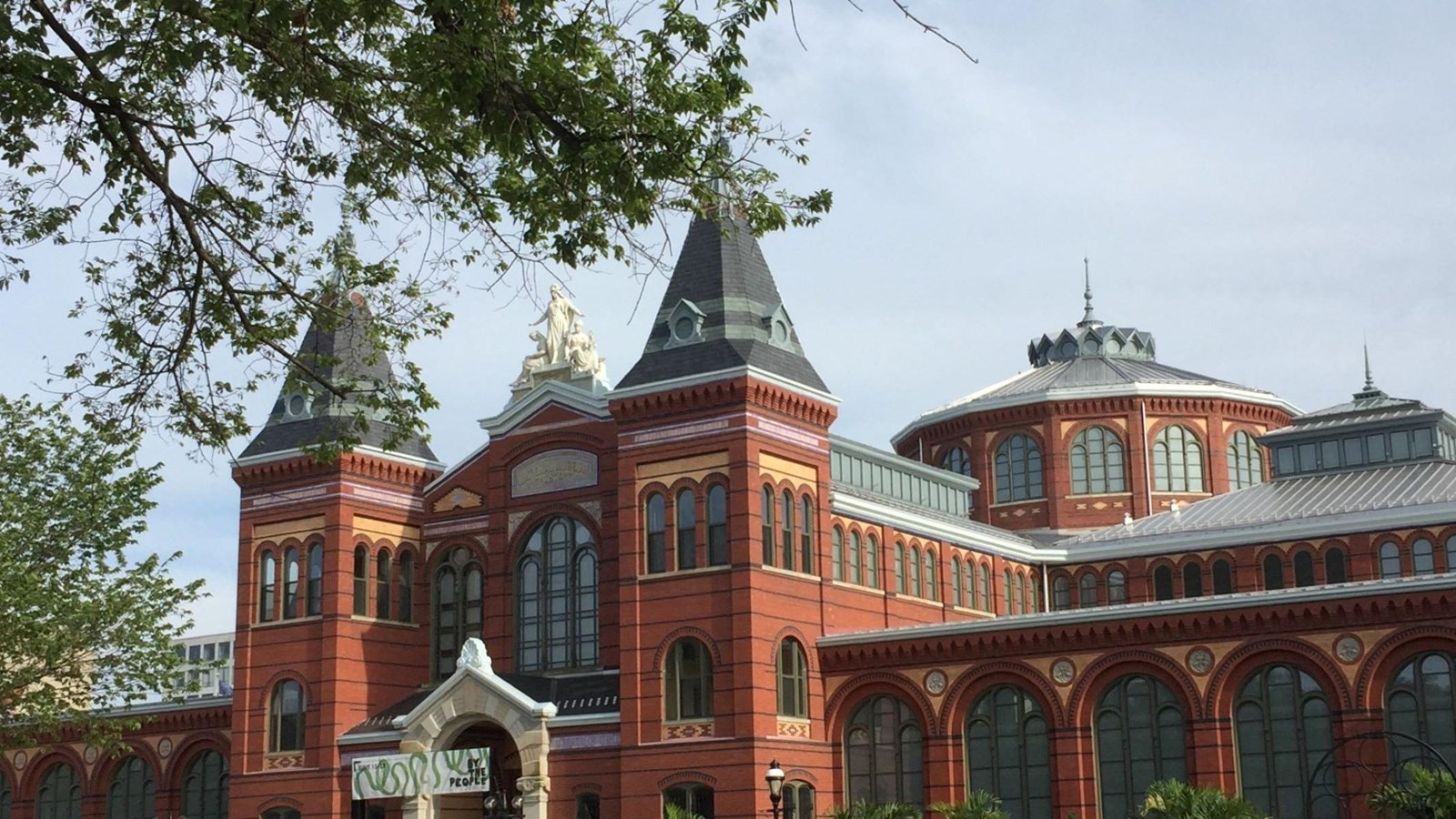Last updated: December 1, 2025
Place
Arts and Industries Building

Maxwell T. Sickler, June 2019
Scenic View/Photo Spot
Opened in 1881 as the United States National Museum, the Arts and Industries Building of the Smithsonian is one of the nation’s foundational museum institutions, showcasing American contributions to culture and industry. Built to house materials from the 1876 Philadelphia Centennial Exhibition, it was designed by Washington architects Adolf Cluss and Paul Schulze and overseen by Civil War General Montgomery C. Meigs. Unlike many exposition buildings, it was intended as a permanent museum, housing the nation’s most important historical and natural artifacts and continuing Washington D.C.’s tradition of cultural stewardship.
World’s Fairs, which began in Europe in the mid-19th century, highlighted technological, artistic, and cultural innovation. The 1876 Centennial Exposition in Philadelphia celebrated 100 years of U.S. independence, and many exhibits were acquired by the Smithsonian. The Smithsonian’s main building, the Castle, was too small to display the materials, prompting the construction of the National Museum adjacent to it. Upon opening, the museum became a Washington landmark, hosting significant social events, including President James Garfield’s inaugural ball, and exhibiting iconic artifacts such as Betsy Ross’ Star-Spangled Banner and First Ladies’ dresses.
The museum was designed with a wide, one-story Greek cross plan, a large central rotunda, and an iron truss roof allowing expansive, uninterrupted exhibit spaces. Nearly 1,000 windows provided natural light, and the entrance features Romanesque Revival towers and Caspar Brubel’s Neoclassical sculpture Columbia Protecting Science and Industry.
In 1910, the Smithsonian built the National Museum of Natural History to accommodate the growing collection, and the National Museum was renamed the Arts and Industries Building. It continued to display artifacts of American history and aviation, including the Spirit of St. Louis and the Wright Brothers’ Flyer, later moved to the National Air and Space Museum in 1946.
Designated a National Historic Landmark in 1974, the building was renovated for the U.S. Bicentennial in 1976, hosting an exhibit on the Philadelphia Centennial Exposition. From the late 1970s to the early 2000s, it hosted experimental exhibits and art installations. By 2009, deterioration required further renovations, and the building remains closed to the public except for occasional programs. The Arts and Industries Building endures as one of the finest surviving examples of World’s Fair architecture and a significant landmark in the history of American museums.
